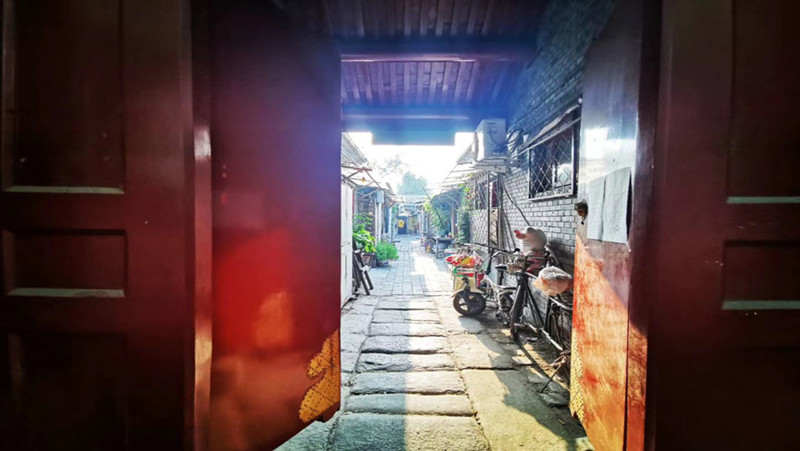Dressing of Old Beijingers in Hutongs

In the 1960s and 1970s, old Beijingers in Hutongs were dressed in a variety of ways. Some wore Chinese-style gowns, some wore Chinese tunic suits, and some were in western suits and ties. At that time, there was a popular saying in Hutongs in spring and autumn, "Whether making money or not, you shall wear hydron blue," referring to the newly tailored clothes in hydron blue. Among most primary and middle school students, the most popular was navy ribbon (with a piece of blue and white striped cloth on the back), while the youth wore overalls. In winter, most people wore a half-length "small overcoat," which made it easy to squeeze onto buses and ride bicycles. Soon after, a short style "cotton monkey" with a "tufted" hat became popular. In winter, the old men still liked to wear Chinese cotton-padded jackets buttoned in front, while the old ladies wore cotton-padded jackets buttoned on one side. As for the lower body, they would wear cotton trousers with a wide waist and crotch. Old people used to fold cotton trousers with black wide straps to tie up their legs, which was warm and made it convenient to move.
With the development of the city, the ways of dressing up for people in Beijing were also changing.
Male government officials and cadres who went to work or on business usually wore a Chinese tunic suit and triple-joint leather shoes. The Chinese tunic suit is well-fitted and gives a sense of decency and generosity. This outfit was considered a "people's costume" for a long time, and could be seen everywhere in Beijing, which was really popular in "the vast sea of people." For females who went to work in government offices, they were dressed in "Lenin" coats. The garment style is double-breasted with large lapels and a pinched waist. A wide waistband is sewn at the back waist, with two slanted pockets at the lower hems. Because such garments were well-made with fine tailoring, they fit well on females. The way Beijingers were dressed at that time was also influenced by foreign fashions. For quite a long time, "Soviet Union" suits for men and "Bulaji" (Russian-style one-piece dresses) for women were wildly popular in Beijing. The most convincing portrayal was that nursery rhymes created by intellectuals were popular among children in Hutongs: "Elder brother of the Soviet Union, big leather shoes and a suit; Miss Soviet Union, flowery dress with bowknots...".
(Source: Takefoto)

